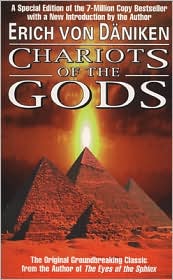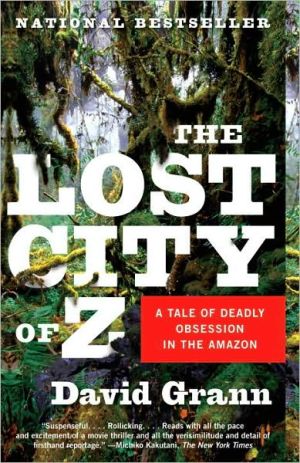How Sex Works: Why We Look, Smell, Taste, Feel, and Act the Way We Do
Why are women biologically driven to find Mr. Tall, Dark, and Handsome?\ Can more sex help ensure a safe pregnancy?\ What effect does pornography have on a man's fertility?\ In this compelling follow-up to the New York Times bestseller Survival of the Sickest, Dr. Sharon Moalem takes us on a trip from prehistory to the forefront of cutting-edge medical research, and through a bedroom or two, to tell the story of how human sexuality has developed over time. How Sex Works challenges common...
Search in google:
Why are women biologically driven to find Mr. Tall, Dark, and Handsome? Can more sex help ensure a safe pregnancy? What effect does pornography have on a man's fertility? Dr. Sharon Moalem, author of the New York Times bestseller Survival of the Sickest, takes us on a trip from prehistory to the forefront of cutting-edge medical research—and through a bedroom or two—to tell the story of how human sexuality has developed over time. How Sex Works challenges common perceptions about our bodies as it provides answers to such provocative questions as: Can the birth control pill influence the type of men women are attracted to? Why do hourglass-shaped women tend to be especially fertile? When are women most likely to cheat? Can twins have different fathers? From the composition and function of human sex organs to the fascinating biochemistry behind sexual attraction, How Sex Works is an entertaining, comprehensive exploration of culture, biology, and history that takes us far beyond our common understanding of sex. The Washington Post - Lynn Harris What the book lacks in rhetorical elegance it makes up for in sheer density and liveliness of scientific detail…[Moalem] also provides scattered but resonant calls for better understanding of human sexuality as a matter of public health.
How Sex Works\ Chapter One\ Girls Just Want to Have Fun\ If you're a woman, you almost certainly remember the first time you got your period. The first menstruation, called menarche, is only one in a series of events that mark the transformation of girls into young women, but it is one that has been loaded with cultural significance throughout human history. For a long time, menarche was thought to coincide with the onset of fertility. Now we know that most girls do not ovulate with menarche; in fact, it can take a year or two after their first menstruation before ovulation even becomes regular.\ Something strange is affecting the age of menarche, making parents and researchers take note and wonder alike. The average age of menarche has crashed from a traditional seventeen to just twelve, in the evolutionarily brisk span of just 150 years. So what is turning young girls into young women so quickly? There are lots of theories, but no clear answers.\ According to the psychosocial acceleration theory, the root cause is increased stress, and a few studies have, in fact, found a correlation between increased stress and earlier menarche. Here's the theory: if young girls in our increasingly complex society experience a lot of stressors early on, their bodies take it as an indication that they have been born into stressful times. In earlier eras, stress was usually the result of circumstances that threatened survival, such as conflicts or famine. In those situations, there might be an evolutionary benefit to earlier menarche, because it would give an individual a chance to reproduce faster, perhaps before succumbing tolocal threats. For most women in the developed world, the source of today's stress is probably not war or famine. But as far as your brain and body are concerned, stress is stress and it produces the same result.\ Then there's a theory that menarche can be triggered in girls who spend little time around their biological father and lots of time around unrelated men. A large study involving 1,938 college women, published in 2006 in the American Journal of Human Biology, indicated that both the absence of biological fathers and the presence of half brothers and stepbrothers had an impact on earlier menarche. According to this theory, the absence of one's father and the presence of unrelated men signals a young woman that it's time to start looking for a mate. And how is that signal sent? Well, it might be by scent. As we'll discuss in more detail later, many animals receive chemical signals through smell, and there is real evidence that humans do as well.\ Another theory that has been garnering considerably more weight over the last few years revolves around the skyrocketing rates of childhood obesity. One recent study that looked at weight and age of menarche was conducted by Joyce Lee at the University of Michigan. Lee tracked 354 girls from the time they were three until they were twelve. She found that there was a clear link between extra weight and early puberty. In her study, obese girls—twenty-two pounds or more overweight—had an 80 percent chance of developing breasts before they were nine years old and reaching menarche before they turned twelve.\ One study suggests, however, that it's not how much fat a girl carries, but where she carries it that is driving early puberty. According to William Lassek, a researcher at the University of California at Santa Barbara: "What our findings suggest is that menarche is likely to occur when girls have stored a certain minimal amount of fat in the hips and thighs, and that girls who tend to store more fat around the waist—who have abdominal obesity—are likely to have delayed menarche."\ Scientists know that sufficient fat stores are key to the onset of menarche. And as Lassek points out, fat located in the lower part of the body is chock full of the omega-3 fatty acids that are so important for fetal brain development. "This fat is protected from everyday use like money deposited in a bank," says Lassek. "You are not allowed to withdraw it until late pregnancy."\ Whatever the biological cause, it's clear that many girls are entering sexual maturity long before they reach emotional maturity, especially today when it takes more emotional maturity than ever to navigate a complicated world. "This long period of mismatch is very confusing for young people," says Peter Gluckman of the University of Auckland, New Zealand. His book, Mismatch: Why Our World No Longer Fits Our Bodies, calls for significant changes in education to help bridge the gap. Gluckman believes that the early age of menarche we're seeing today is likely our set point for menstruation—the norm, given good health and nutrition. According to Gluckman, with the advent of agriculture the overall level of nutrition dropped, resulting in a decrease in nutritional health, and increase in the age of menarche. Early menstruation creates a mismatch for some girls. They may be physically ready, but emotionally and intellectually unable to handle the responsibilities of adult sexuality.\ Menarche is essentially the culmination of puberty in girls. Puberty itself is the incredible collection of physiological processes that transform children into adults, with sexually mature bodies capable of reproduction. We're constantly uncovering more of the biological nuances associated with the onset of puberty. For example, scientists have recently discovered a protein called kisspeptin (named in honor of Hershey Kisses by researchers at the Penn State College of Medicine), which plays an important role as a biological signal in starting both puberty and ovulation.\ But even though the physical transformation into a sexually mature human being is more or less on biological autopilot, adult sexuality is anything but just biological. Modern sexuality is the intersection of biology, society, and history.\ What we need, what we want, what we like, and how we like it are all shaped by a combination of evolutionary imperatives, cultural training, and individuality. Evolution, of course, has a keen interest in encouraging us to have sex, even if it comes at a significant cost. The guiding imperative for any species is survival. At least for us, and for most vertebrate animals, no sex means no babies, and no babies means extinction. Having an interest in our sex lives clearly has evolutionary advantages. But before we get too far into how sex works, let's begin by looking at how girls become women, how women become sexual, and how those changes affect the way men (and other women) perceive them.\ How Sex Works. Copyright © by Sharon Moalem. Reprinted by permission of HarperCollins Publishers, Inc. All rights reserved. Available now wherever books are sold.
\ From Barnes & NobleDr. Sharon Moalem is an award-winning neurogeneticist and evolutionary biologist, but don't let those lofty credentials scare you away from his entertaining, accessible books. How Sex Works features not just a crowd-pleasing title but also fascinating discoveries about human sexuality from recent cutting-edge research. Dr. Moalem dares to ask -- and answer -- questions about the biochemistry of sexual attraction that have proved eternally puzzling. Samples: When are women most likely to cheat? What effect does pornography have on a man's fertility?\ \ \ \ \ O magazine“Packed with trivia about the evolutionary history, intricate mechanics, and nitty-gritty mysteries of sex, sexual organs, and desire, Sharon Moalem’s How Sex Works manages to inject science writing with the prurient thrill of a gossip rag.”\ \ \ Daily Beast“Sharon Moalem’s new book goes far beyond the typical ‘birds and bees’ sex talk. The neurogeneticist delves deep into human sexuality, and comes to some surprising conclusions.”\ \ \ \ \ Lynn HarrisWhat the book lacks in rhetorical elegance it makes up for in sheer density and liveliness of scientific detail…[Moalem] also provides scattered but resonant calls for better understanding of human sexuality as a matter of public health.\ —The Washington Post\ \ \ \ \ Publishers WeeklyBirds do it, bees do it, but why do humans do it? In this wide-ranging look at the evolutionary reasons for sex, physiologist and evolutionary biologist Moalem says that it's all about shuffling the gene pool and getting rid of any unwelcome guests, such as viruses, that may have latched onto human DNA. But why is one particular person attracted to another? Moalem relays the latest research showing that smell plays a very important role in attraction, and that even our genes may influence one's smell, and thus a person's desirability, to others. Scientists have found that women tend to be attracted to different types of men at different points in their ovulation cycles (dark and handsome hunks at their height; sensitive, care-giving types at other times). Moalem (Survival of the Sickest) whizzes through his discussion of homosexuality, neglecting angles that would have added to the book, but readers will find thought-provoking material in his chapter on differences in sexual anatomy and on how chromosomes and body parts aren't always what we expect them to be. Moalem writes fluidly for the general reader, and when he necessarily goes into graphic detail, he does it gracefully. (May)\ Copyright © Reed Business Information, a division of Reed Elsevier Inc. All rights reserved.\ \ \ \ \ Library JournalMoalem (Survival of the Sickest) writes, "We're here to explore human sexuality from beginning to end-what we like and why we like it; how it makes us feel; how it can go wrong; and how human intervention, through cultural traditions, scientific discovery, or both, can divert nature's path-across history, geography, culture, gender, and orientation...how sex works." It's not surprising that the book, while jam-packed with interesting factoids, fails to live up to this grandiose ambition. Chapters cover puberty, factors in attraction and arousal, sexually transmitted diseases, and birth control. Emphasis is placed on the oddest or least-known phenomena; much of the chapter on arousal, for example, is taken up with a discussion of female ejaculation, which isn't a huge part of the process for most people. While the book certainly fails on its self-stated terms, it is a pleasant read based on solid research, and it's probably more fun for being more like Ripley's Believe It or Not! than a comprehensive study. Recommended for most public libraries.\ —Mary Ann Hughes\ \ \ \ \ \ Kirkus ReviewsMoalem (Survival of the Sickest, 2007) explores the social human from a sexual perspective, concluding that the evolution of sexuality can teach us a lot about behavior..From the earliest records of copulation to the latest medical research, the author examines every aspect of sex and relates it to our bodies' innate desire to procreate. He spares no subject. Menstruation, fertility, penis size, orgasm, ejaculation and contraception all prove to be physiological sidebars to the evolutionary edict "survival of the fittest," which the author equates with finding a healthy, virile partner and a secure, loving environment for childrearing. Factors influencing sexual attraction include pheremones, genetic makeup, immune system compatability and even ovulation. Of course, physical appearance also plays a role, but our perception of "good looks" is often shaped by a subconscious agenda. That "tall, dark and handsome" man has more pigment, which means lower folate levels, which indicate healthier sperm. The author argues that even homosexuality could be explained developmentally based on the type and amount of certain hormones present in the womb. Many species engage in homosexual activity for pleasure, he notes, suggesting that same-sex coupling may prove to be yet another piece of the evolutionary puzzle. Some of the theories Moalem presents are controversial, but all are provocative and entertaining, and he is careful to include cultural context when addressing sensitive issues like circumcision or STDs. The result is a volume stuffed with information that avoids getting bogged down in difficult medical terms or complex biological concepts..An accessible presentation of sex not just as anecessary means to protect our species, but also a vital part of a culture structured around love and pleasure.\ \ \ \ \ Daily Beast"Sharon Moalem’s new book goes far beyond the typical ‘birds and bees’ sex talk. The neurogeneticist delves deep into human sexuality, and comes to some surprising conclusions."\ \ \ \ \ Kinney Zalesne"Moalem makes evolution sexy and sex astonishing. If you’ve ever been surprised by either your body or your heart, this book will probably tell you why."\ \ \ \ \ Doctor\ - Beverly Whipple\ "Have you ever wondered HOW SEX WORKS? This book answers all of the questions you’ve ever wanted to know about how your body works sexually, but did not know where to find the answers. They are here!"\ \ \ \ \ Rachel P. Maines"An engaging synthesis of scientific research on why we humans experience our sexuality the way we do."\ \ \ \ \ Peter Macinnis"Read this book and discover sex again, but from a scientific perspective, and see why it evolved. It’s almost as much fun, and needs less energy."\ \ \ \ \ Nancy Redd"HOW SEX WORKS is a must-buy for anyone interested in the ins and outs of why, psychologically and biologically, sex is about much, much more than the mere birds and bees."\ \ \ \ \ O Magazine"Packed with trivia about the evolutionary history, intricate mechanics, and nitty-gritty mysteries of sex, sexual organs, and desire, Sharon Moalem’s How Sex Works manages to inject science writing with the prurient thrill of a gossip rag."\ \








